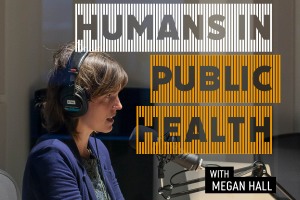Valuing Health Care
To guide policymakers in addressing this growing crisis, Brown researchers are working to find where costs are growing, and whether greater costs lead to better care. Together with other researchers, they have documented Medicare Advantage’s higher costs, showing that in addition to higher benchmark payments, plans have worked hard to add diagnoses to the medical records of beneficiaries. More diagnoses means that plans are paid more by the government, which wants to make sure plans don’t only enroll the healthiest beneficiaries, and that sicker beneficiaries cost more. But plans have become increasingly aggressive in their efforts to add diagnoses, including using artificial intelligence to enable more sophisticated “upcoding.”
Paying more to Medicare Advantage could make sense if beneficiaries are receiving better care—if, for example, more diagnostic codes led to better health outcomes. But drawing conclusions about quality of care requires a rich understanding of the patient and their health outcomes to account for severity of disease, health status, and other key variables, including the social determinants of health.
To compare the quality of care offered in traditional fee-for-service Medicare and in Medicare Advantage, researchers need to be confident that the two groups of beneficiaries are statistically similar. But the first Medicare Advantage beneficiaries tended to be “the healthiest slice of the population,” says Trivedi—healthier than their counterparts who remained in traditional Medicare. Even as Medicare Advantage has grown and the two groups of beneficiaries have become more similar, it remains difficult to eliminate statistical differences between the two populations.
“It’s very hard to study Medicare Advantage,” says Ryan. “We don’t have a random assignment of beneficiaries going in. People choose to go to Medicare Advantage, and plans more aggressively market to, and recruit, certain types of patients.” In 2012, Trivedi helped show that Medicare Advantage plans that offered fitness memberships as a benefit had healthier beneficiaries than plans that didn’t offer such benefits.
To counteract this incentive to enroll healthier, low-cost patients, the Centers for Medicare and Medicaid Services (CMS) changed the way it paid Medicare Advantage plans. Traditional Medicare reimburses providers for the care they provide in a fee-for-service model. Under Medicare Advantage, private plans assume responsibility for providing care, and receive a “capitated,” per-participant fee from Medicare, keeping a portion of any savings. Rather than paying a standard rate, CMS paid Medicare Advantage plans more for beneficiaries whose care was expected to cost more—an approach known as “risk adjustment.”
Risk adjustment has helped diversify Medicare Advantage beneficiaries. A recent study by David Meyers, assistant professor of health services, policy and practice, found that the recent growth in Medicare Advantage enrollment included many Black and Hispanic beneficiaries, as well as “dual eligibles”—people who can receive both Medicare and Medicaid, the federal program that pays for care for Americans with lower incomes.
But if risk adjustment has helped address adverse selection in Medicare Advantage plans, it has distorted care and costs in other ways, as plans work to maximize their financial returns. “Once patients are enrolled, plans have very strong incentives to make them look sicker,” says Ryan.
“If you document more illness, you get more payments,” says Trivedi. “So the plans have been very creative about ways to make sure that as many diagnoses are coded as possible.”
The practice of upcoding is a primary driver of Medicare Advantage’s higher costs, amounting to $321 per person in 2019 (a total of $7 billion), reflecting a nearly 10% increase in risk scores relative to traditional Medicare beneficiaries. Some of this money goes to fund additional benefits, and greater focus on diagnosis probably improves some forms of care. But there is increasing concern that many of these diagnoses are, at best, of marginal clinical value. Some Medicare Advantage plans are alleged to have committed fraud, reporting lucrative diagnoses with no clinical basis. Some firms allegedly overbilled hundreds of millions of dollars by, for example, failing to make clear when serious conditions like cancer had resolved.
A new rule announced earlier this year will allow CMS to audit more aggressively, and to extrapolate its findings from the sample of patient records reviewed to all of a plan’s beneficiaries, in an effort to claw back overpayments.
These efforts will go a long way to ensuring Medicare Advantage plans are paid in keeping with the value of the care they provide, but many hard questions remain. There is a huge gray area between diligent efforts to find clinically valuable diagnosis, and efforts to boost risk scores through codes that are not clinically justified.
It’s a question of incentives, says Trivedi. “These are private plans—they want to maximize profits. One of the ways that plans maximize revenue is to increase the payment rate for each enrollee, based on how sick people are. So if you document more illness, you get more payments.”
